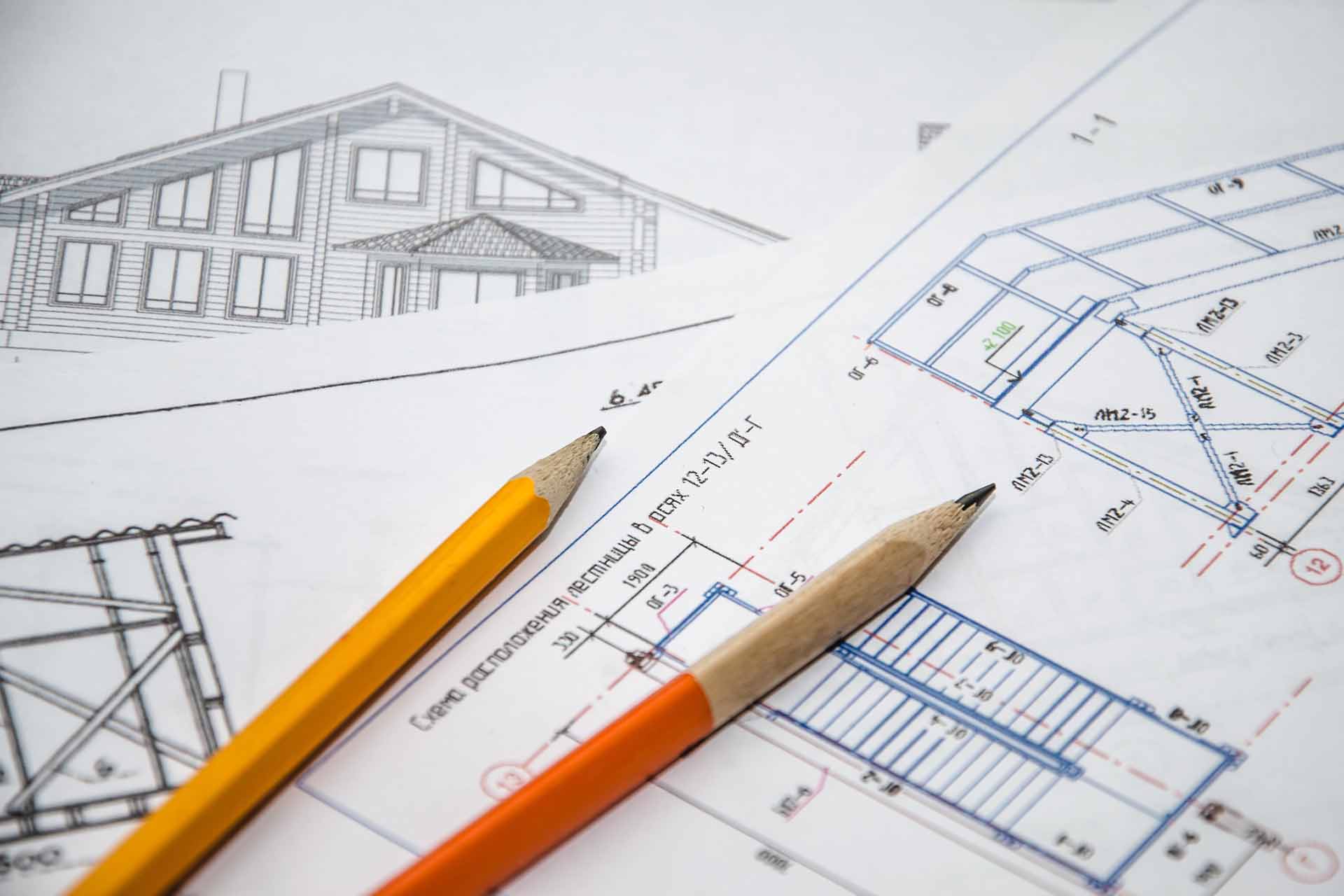Architect Rules for Designing Evergreen Interiors
Architect Rules for Designing Evergreen Interiors
Blog Article
Comprehending the Diverse Career Paths Available for Aspiring Architect
As an aspiring Architect, you have a globe of occupation courses waiting for you. Each course provides one-of-a-kind obstacles and opportunities to apply your creative thinking and technical knowledge. Whether you're drawn to conventional design or the nuances of lasting layout, there's a particular niche that straightens with your rate of interests. Recognizing these varied options can form your professional trip, however which direction will you select to explore first?
Typical Architecture: Creating Structures and Frameworks
Traditional architecture focuses on developing buildings and structures that blend capability with visual appeal. Your layouts can reflect social heritage, showcasing local customs while meeting modern demands.
You'll create skills in preparing, model-making, and website analysis, allowing you to imagine and connect your concepts efficiently. Engaging with customers, you'll need to recognize their vision and convert it into viable layouts.
Furthermore, constructing codes and sustainability techniques are vital in your work, ensuring your frameworks are secure and eco-friendly. As you grow in your job, you'll locate chances in residential, industrial, or also reconstruction projects, each offering one-of-a-kind obstacles. Welcoming typical style leads the way for a meeting profession that pays tribute to the past while forming the future.
Urban Preparation: Forming Areas and Public Spaces
As an ambitious Architect, you can play an important function as an urban planner, changing just how communities interact and operate. By utilizing area involvement approaches, you'll ensure that citizens have a voice in forming their setting. Plus, incorporating lasting style principles will help develop rooms that not only meet today's needs but likewise secure the future.
Function of Urban Planners
While numerous might think about designers as the sole dreamers behind buildings, metropolitan planners play an essential role fit the wider landscape of neighborhoods and public areas. They examine land use, zoning laws, and community needs to develop sustainable settings that improve lifestyle. By working together with different stakeholders, you'll help develop parks, transport systems, and suburbs that advertise social interaction and availability. Urban organizers likewise focus on ecological considerations, guaranteeing that growths integrate eco-friendly rooms and support biodiversity. Your know-how in spatial design and area dynamics enables you to imagine future growth while protecting social heritage. In this essential role, you'll straight affect how people experience their surroundings, making every job an opportunity for favorable change.
Neighborhood Engagement Methods
Efficient area engagement techniques are essential for urban organizers to assure that the voices of locals are listened to and valued in the planning procedure. To promote purposeful dialogue, you ought to focus on open online forums and workshops where community participants can reveal their concepts and worries. Usage surveys and social networks to get to a wider audience, making certain varied perspectives are consisted of. Collaborating with neighborhood companies can enhance depend on and help with deeper links. It's essential to supply clear information regarding decision-making procedures and proposed jobs, enabling citizens to feel educated and empowered. By actively incorporating and listening responses, you'll develop spaces that mirror the neighborhood's needs, ultimately bring about more lasting and effective urban environments. Embrace openness and continuous discussion for enduring influence.
Lasting Design Concepts
When designing city spaces, integrating lasting design principles is critical for creating atmospheres that prosper both environmentally and socially. Consider incorporating environment-friendly areas, like yards and parks, to improve biodiversity and improve air quality.
Creating with water preservation in mind is also key-- consider rainfall gardens and absorptive surface areas to manage stormwater. Entailing neighborhood participants during the preparation procedure assurances that the rooms you develop fulfill their needs and motivate social communication. By embracing these principles, you'll add to lively, sustainable urban landscapes that profit everyone.

Landscape Architecture: Creating Sustainable Outdoor Environments
As you check out landscape style, you'll discover crucial layout principles that create beautiful and functional exterior spaces. Sustainable methods play an important function in making certain these settings thrive while lessening environmental effect. Plus, you'll discover a variety of job opportunities that allow you to make a genuine difference in just how individuals interact with nature.
Style Principles in Landscape
Comprehending design principles in landscape design is essential for producing sustainable outside environments that harmonize with nature. You'll need to consider aspects like equilibrium, proportion, and range to guarantee your styles feel natural and inviting. Incorporating native plants not just improves biodiversity yet also reduces water usage, making your landscape resistant. Think of the circulation of space and exactly how people connect with it; pathways and seating areas need to invite exploration and leisure. Additionally, take notice of seasonal adjustments, creating with products that enhance the surroundings year-round (Architect). By focusing on sustainability and appearances, you can produce outside spaces that improve the community and promote well-being. Accepting these principles will certainly establish a strong structure for your career in landscape style.
Lasting Practices Introduction
Lasting techniques in landscape style not only concentrate on aesthetics yet likewise prioritize eco-friendly wellness and resource preservation. By integrating native plants, you enhance biodiversity and reduce the need for chemical plant foods and chemicals. Carrying out reliable irrigation systems aids conserve water and lessens overflow, safeguarding close-by communities. You can design areas that advertise dirt health and wellness, such as utilizing natural materials and practicing permaculture principles. In addition, integrating eco-friendly infrastructure, like rain yards and permeable pavements, help in stormwater administration and decreases metropolitan heat. You add to a much healthier world and provide spaces that promote area link when you develop outside settings with sustainability in mind. Ultimately, these practices assure your designs benefit both people and the atmosphere for years to find.
Job Opportunities Expedition
With a strong foundation in sustainable techniques, landscape style offers a variety of profession courses that allow you to make a purposeful impact on the atmosphere. Urban planners usually collaborate with landscape architects to develop environment-friendly rooms in city settings, boosting city livability. If you're passionate regarding education and learning, consider coming to be a landscape style teacher, inspiring future generations.
Sustainable Design: Focusing on Eco-Friendly Practices
As you explore your profession in architecture, welcoming eco-friendly practices can set you apart in an affordable field. Lasting style concentrates on producing structures that minimize ecological influence while improving occupant well-being. By incorporating sustainable materials, energy-efficient systems, and lasting building methods, you'll add to a greener future.
Begin by acquiring knowledge of environment-friendly qualifications like LEED or BREEAM, which can boost your credentials. Think about just how all-natural light, ventilation, and thermal effectiveness can enhance layout. Collaborate with designers and environmental experts to introduce services that minimize waste and save resources.
Do not neglect the significance of area involvement-- appealing regional stakeholders can inspire styles that integrate with the environment. As clients progressively prioritize sustainability, your competence in green techniques will not weblink just attract jobs yet additionally accomplish your passion for responsible style. Welcome this important element of the profession, and see your occupation prosper.
Historic Preservation: Securing and Restoring Cultural Heritage
While you begin on your architectural trip, take into consideration the essential duty of historical preservation in preserving our social heritage. This area concentrates on the defense and repair of considerable structures, sites, and frameworks that inform the tales of our past. By involving in historic conservation, you'll help guard the architectural heritage that shapes community identification.
As a historical preservation Architect, you'll examine historic relevance and evaluate the problem check out this site of structures. You'll function closely with chroniclers and preservationists to assure authentic reconstruction techniques are utilized. This job path enables you to blend creative thinking with research, enabling you to develop solutions that appreciate initial materials and workmanship.
Your job not only contributes to sustainability by recycling existing structures yet also fosters a sense of satisfaction within communities. Accepting this path will help you become a guardian of history, maintaining the tales and aesthetics that improve our lives.
Interior Design: Enhancing Indoor Spaces
Historic preservation and indoor design both share a dedication to improving the built environment, however they concentrate on different facets. While historic conservation stresses preserving a framework's social and historical worth, interior style absolutely nos in on enhancing indoor spaces for performance and aesthetics.
As an ambitious Architect, you'll locate that interior style enables you to mix creativity with technological skills. You'll make spaces that not only look good yet also promote convenience and performance. This area includes understanding how light, color, and products interact within a room, influencing mood and use.
You'll work on various projects, from domestic homes to commercial workplaces, making certain that each environment satisfies the requirements of its occupants. By prioritizing individual experience, you can change insides right into functional and inspiring spaces, making a considerable effect on exactly how people engage with their surroundings. Embrace the opportunity to boost interior atmospheres and shape the method people work and live.
Industrial Design: Merging Functionality With Aesthetic Appeals
Commercial style plays an essential duty in developing items visit site that perfectly mix visual appeals with functionality, guaranteeing that what you use everyday is not only visually enticing but likewise sensible. As an aspiring Architect, you can immerse on your own in this field, concentrating on designing whatever from furnishings to consumer electronic devices. Your job entails recognizing user requirements, materials, and making processes, enabling you to develop innovative remedies that improve day-to-day experiences.
In commercial design, you'll typically collaborate with online marketers, designers, and suppliers, guaranteeing that your designs are not just stunning but likewise feasible. This job path supplies a dynamic setting where creativity satisfies usefulness, making it a gratifying selection for designers interested in forming the products of tomorrow.
Regularly Asked Inquiries
What Educational Credentials Do I Required to Become an Engineer?
To come to be an architect, you'll need a specialist degree in design, typically a Bachelor's or Master's. Additionally, you'll have to finish a teaching fellowship and pass the Architect Enrollment Exam to exercise legally.
Are There Qualification Demands for Various Building Career Paths?
Yes, there're certification demands for numerous architectural paths. Architect. You'll require to pass exams, full teaching fellowships, and sometimes pursue specialized training, depending on your chosen emphasis, like landscape design, metropolitan layout, or historical conservation
What Software Program Skills Are Essential for Architects Today?

How Can I Gain Practical Experience While Examining Design?
You can acquire useful experience by interning at architectural firms, joining design competitors, offering for area jobs, or working together with classmates on real-world projects. These opportunities boost your abilities and build valuable links in the market.
What Job Opportunities Exist Outdoors Conventional Architecture Firms?
You can discover numerous work possibilities outside conventional architecture companies, like urban preparation, interior layout, landscape style, construction management, property advancement, and even functions in sustainability consulting. Each deals unique obstacles and rewards.
Whether you're attracted to typical architecture or the subtleties of sustainable style, there's a niche that lines up with your rate of interests.When designing city rooms, incorporating lasting style concepts is crucial for producing environments that thrive both ecologically and socially.As you check out landscape style, you'll discover important style concepts that develop functional and gorgeous outside rooms.Recognizing design principles in landscape design is essential for creating lasting exterior environments that harmonize with nature.In industrial design, you'll typically work together with makers, online marketers, and designers, making sure that your designs are not just lovely however also viable.
Report this page